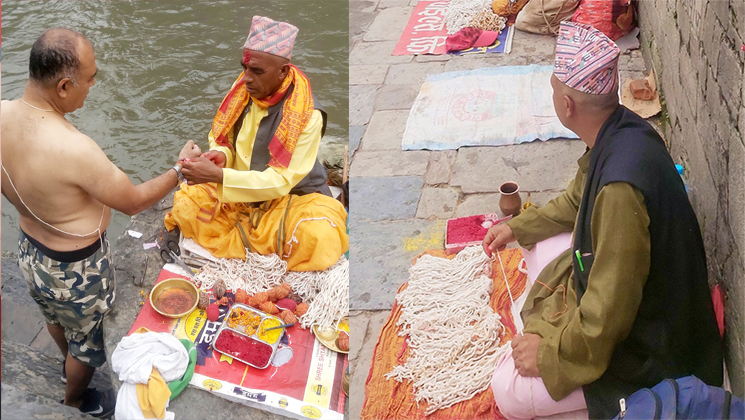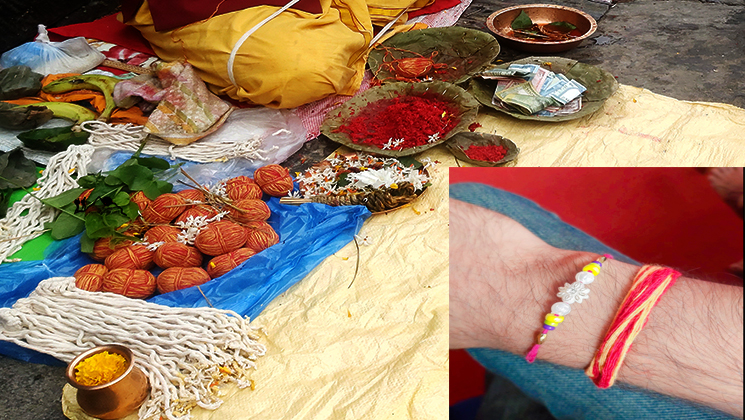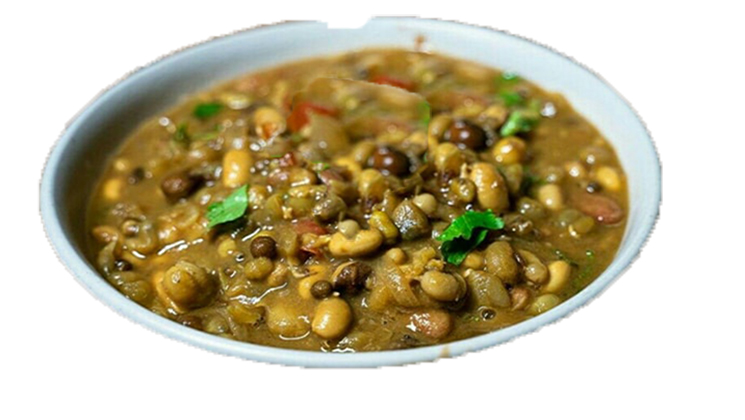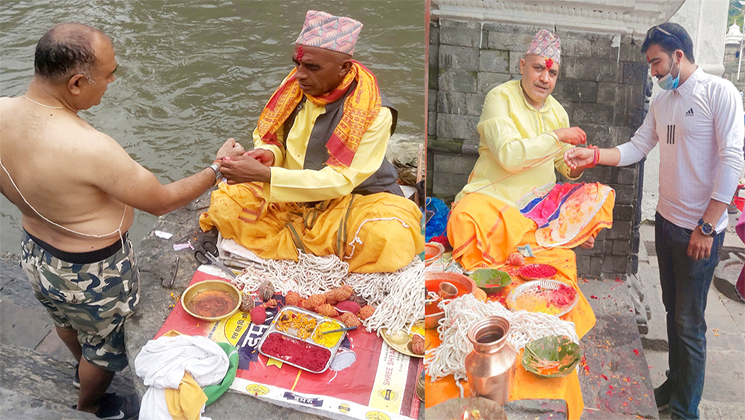Janai Purnima – All you need to know
Janai Purnima, also known as Raksha Bandhan or Rakhi Purnima, is a Hindu festival celebrated in Nepal and some parts of India. “Janai” refers to a divine thread, and “Purnima” means the full moon day.
Apart of this, Janai Purnima associate with spiritual and religious significance. Devotees visit holy rivers, temples, and shrines to offer prayers, perform rituals, and seek blessings. They take ritual baths in rivers or ponds and engage in religious activities to purify their souls and seek forgiveness for past sins.
The festival usually falls on the full moon day in the Nepali month of Shrawan (July-August) every year. The exact date of Janai Purnima varies each year according to the lunar calendar. Therefore, it is advisable to refer to a Hindu calendar or consult local sources to determine the specific date of the festival in a particular year.
Why celebrates Janai Purnima?
Janai Purnima celebrates to honor the religious thread tradition, strengthen the bond between siblings, seek divine blessings, and purify oneself spiritually. It is a festival that upholds religious values, family ties, and cultural traditions. However, it celebrates for several reasons, each associate with different religious and cultural beliefs. Here are some of the main reasons for celebrating Janai Purnima:
Divine Thread Changing Ceremony:
Janai Purnima is primarily known for the divine thread changing ceremony. It is a significant ritual for Hindu men, particularly Brahmins and Chhetris, who wear a blessed thread called “Janai” or “Janeu.”

The thread symbolizes their initiation into manhood and their commitment to following religious and moral values. On this day, they replace their old thread with a new one, which is blessed by a priest. The thread represents purity, protection, and connection to the divine.
Raksha Bandhan:
Janai Purnima is also known as Raksha Bandhan in many regions. It is a celebration of the bond between siblings, specifically between brothers and sisters. On this day, sisters tie a holy thread called “Rakhi” around their brothers’ wrists. The Rakhi signifies the sister’s love, care, and prayers for her brother’s well-being. In return, brothers give gifts to their sisters and promise to protect and support them. This tradition symbolizes the strong bond and mutual responsibilities between siblings.
Religious Significance:
Janai Purnima holds religious significance for Hindus. It believes that Lord Shiva, a prominent Hindu deity, wears a holy thread called “Rudraksha” around his neck. By changing their Janai, Hindu men seek to emulate Lord Shiva’s divine qualities and attain his blessings. Moreover, the festival falls on the full moon day, which is consider a auspicious in Hinduism. Devotees visit temples, perform rituals, and seek blessings from deities.
Purification and Atonement:
Janai Purnima is also associates with purification and atonement. Devotees take ritual baths in holy rivers or ponds, such as the Bagmati River in Nepal, to cleanse themselves of impurities and sins. They believe that bathing on this day purifies their body, mind, and soul. It is also an occasion to seek forgiveness for past wrongdoings and to start afresh.
Janai Purnima VS Raksha Bandhan
Both of them are two different names for the same festival, celebrates in different regions and communities. The festival is known as Janai Purnima in Nepal and Raksha Bandhan in India.
Janai Purnima is predominantly observe in Nepal, where it holds religious and cultural significance. The primary ritual of Janai Purnima is the changing of the sacred thread (Janai) worn by Hindu men belonging to the Brahmin and Chhetri communities. It symbolizes their initiation into manhood and their commitment to religious and moral values. The festival also involves the tying of Rakhi by sisters on their brothers’ wrists, signifying love, protection, and the bond between siblings.

Raksha Bandhan, on the other hand, is the widely notable name for the festival in India. It observes across the country by Hindus and is not limited to a particular region or community. The central aspect of Raksha Bandhan is the ritual of sisters tying a Rakhi (a holy thread) on their brothers’ wrists. In return, brothers give gifts to their sisters and take a pledge to protect and support them.
Although the names may differ, both Janai Purnima and Raksha Bandhan share the core theme of strengthening the bond between siblings and symbolizing the love, care, and protection they offer to one another. The festival highlights the significance of family ties and serves as a reminder of the responsibilities and duties siblings have towards each other.
Special dish to eat in this janai Purnima festival day
The food preparation and consume during Janai Purnima varies base on regional customs and personal preferences. However, there are a few traditional dishes that are commonly prepare and enjoy during the festival. Here are some popular food items associates with Janai Purnima:
Kwati:
Kwati is a traditional Nepali soup made from a mix of nine different types of sprouted beans and lentils. It’s highly nutritious and is typically prepare on Janai Purnima. Kwati symbolizes the diversity and abundance of nature.

Sel Roti:
Sel Roti is a sweet and crispy rice flour bread or donut-like snack. It is a popular festive treat in Nepal and is often made during Janai Purnima. Sel Roti prepare with a batter made of rice flour, sugar, and cardamom that fly on oil, resulting in a delightful and aromatic snack.
Juju Dhau:
Juju Dhau, also known as “King of Yogurt,” is a famous sweet yogurt from Bhaktapur, Nepal. It is a creamy and thick yogurt with a unique flavor. Juju Dhau is a special delicacy and is often consume during festive occasions like Janai Purnima.
Bara:
Bara is a savory lentil pancake that is popular in Nepal. It is made from a mixture of ground lentils, spices, and herbs, which are fried until crispy. Bara is a variety of chutneys or as part of a larger meal during Janai Purnima celebrations.
Sweets and Desserts:
Various sweets and desserts are prepare and enjoy during Janai Purnima. Some common choices include laddoos (sweet round balls made from flour and sugar), kheer (rice pudding), jalebi (syrup-soaked deep-fried pretzel-like sweet), and gulab jamun (deep-fried milk-based sweet dumplings soaked in sugar syrup).
It’s important to note that the specific food items and preparations may vary depending on individual preferences, regional customs, and cultural practices. These are just a few examples of the traditional foods associated with Janai Purnima, and the actual choices may differ from household to household or from region to region.
About Kwati
Kwati is a traditional Nepali soup made from a mixture of nine different types of sprouted beans and lentils. It is a nutritious and flavorful dish that is commonly cook during festivals like Janai Purnima. Here’s a general recipe for preparing Kwati:
Ingredients to prepare:
1 cup mixed sprouted beans and lentils (such as kidney beans, black-eyed peas, chickpeas, green mung beans, soybeans, black gram, etc.)
2 tablespoons ghee or oil
1 teaspoon (Cumin, minced garlic & ginger)
1 medium onion, finely chopped
2 medium tomatoes, finely chopped
Likewise, 1 teaspoon (turmeric powder, red chili powder (adjust to taste).
Salt to taste
Water
Chopped cilantro for garnish
Sliced ginger for garnish
Squeeze of lemon (optional)
Simmer the Kwati on low heat for about 20-30 minutes to allow the flavors to blend together. Stir occasionally and adjust the seasoning according to taste. Kwati soup is typically serve with steamed rice, roti, or bread. It is a wholesome and nourishing dish that prepare in larger quantities to serve a group of people during festive occasions.

